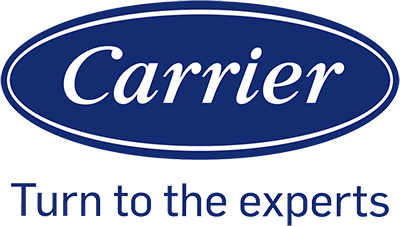When we think about HVAC maintenance, air duct cleaning often gets overlooked. Dust, dirt, and debris build up over time, forcing the system to work harder than it should. Routine air duct cleaning helps prevent costly HVAC repairs by reducing strain on the system and keeping it running efficiently.
By keeping ducts clear, we lower the risk of breakdowns and extend the life of our equipment. Clean ducts also improve airflow, which means the system doesn’t have to push as hard to heat or cool the space. That small step can save us from expensive service calls and unexpected repairs.
We also benefit from better air quality and comfort when ducts stay clean. A well-maintained system delivers consistent performance, uses less energy, and provides a healthier environment. This simple habit sets the foundation for fewer problems and more reliable HVAC operation.
How Routine Air Duct Cleaning Prevents Costly HVAC Repairs

When we keep our ductwork clean, the HVAC system runs with less strain, fewer blockages, and reduced wear on parts. This lowers the chance of expensive HVAC repairs and helps the equipment last longer.
Reducing Strain on HVAC Components
Dust and debris in the ductwork force the HVAC system to work harder to push air through. This extra effort increases energy use and puts stress on the blower motor, fan, and other moving parts.
When airflow stays clear, the system can heat or cool more efficiently. Clean ducts support even air distribution, which prevents hot or cold spots that cause the system to cycle more often.
By reducing strain, we give key components like the blower motor and coils a longer service life. This lowers the risk of sudden breakdowns and the need for costly replacements.
Key benefits of less strain:
- Lower energy use
- Fewer overheating issues
- Longer lifespan for motors and fans
Preventing Dust Buildup and Blockages
Dust buildup in ducts leads to clogs that restrict airflow. These blockages can cause the HVAC system to overheat or shut down unexpectedly.
When dust collects on coils, it reduces heat transfer and makes the system run longer to maintain the set temperature. This adds to wear and can trigger expensive HVAC repairs if the coils fail.
Routine duct cleaning removes dust before it spreads to other parts of the system. By keeping ducts clear, we help prevent clogged filters, dirty coils, and reduced airflow that strain the system.
Common issues from dust buildup:
- Frozen evaporator coils
- Reduced airflow through vents
- Higher repair frequency
Minimizing Wear and Tear on System Parts
Every time the HVAC system runs with dirty ducts, parts like bearings, belts, and motors face extra stress. Over time, this increases wear and shortens the lifespan of these components.
Clean ducts keep air moving freely, which reduces the number of cycles the system must run. Fewer cycles mean less friction and less wear on moving parts.
By lowering wear and tear, we avoid small issues turning into major HVAC repairs. This helps us save money and keep the system reliable for longer periods.
Parts most affected by excess wear:
- Blower motor
- Fan belts
- Bearings
- Coils
Key Benefits of Regular Air Duct Cleaning
Clean ducts help HVAC systems run with less strain, use less energy, and avoid unnecessary wear. By reducing buildup inside the system, we can keep equipment working longer, lower utility bills, and maintain steady performance.
Extending Equipment Lifespan
When dust and debris collect in air ducts, the HVAC system must work harder to push air through. This extra strain can shorten the equipment lifespan by wearing out motors, fans, and other parts faster than normal.
By keeping ducts clean, we reduce the load on the system. Less buildup means smoother airflow and fewer blockages. That allows the equipment to run under normal conditions instead of being forced to overwork.
A longer HVAC longevity also means fewer unexpected breakdowns. Instead of replacing major parts early, we can maintain the system on schedule. This helps us avoid costly repairs or replacements that often come from neglected duct cleaning.
Improving Energy Efficiency
Dirty ducts restrict airflow. When that happens, the system must stay on longer or cycle more often to reach the set temperature. This increases energy consumption and wastes power.
Clean ducts keep air moving freely. With less resistance, the system can heat or cool the space more quickly and evenly. That means the equipment uses less effort to deliver the same results.
We also notice that rooms stay more consistent in temperature when airflow is balanced. This not only improves comfort but also prevents the system from running longer than necessary. The result is better energy efficiency across the entire HVAC system.
Lowering Energy Costs
Every extra minute the HVAC system runs adds to the monthly utility bill. When ducts are clogged, the system consumes more electricity or fuel. Over time, this steady increase can raise energy costs far beyond what is necessary.
By cleaning ducts, we reduce wasted energy. The system reaches the desired temperature faster and shuts off sooner. That means less money spent on power.
Even small improvements in efficiency can make a difference. For example:
| Condition | Energy Use | Cost Impact |
|---|---|---|
| Dirty ducts | Higher | Increased bills |
| Clean ducts | Lower | Reduced bills |
Regular cleaning keeps costs predictable and helps us avoid paying more than we should for heating and cooling.
Enhancing Indoor Air Quality and Comfort
Routine duct cleaning helps us maintain cleaner air, steady airflow, and fewer health concerns in our living spaces. By removing buildup inside the system, we improve how well the HVAC runs and how comfortable the air feels throughout the home.
Removing Allergens and Contaminants
Dust, pollen, and pet dander often collect inside air ducts. When air moves through the system, these particles spread into rooms and settle on surfaces. This buildup can lower indoor air quality and make cleaning harder.
We reduce these issues by clearing ducts of debris that HVAC filters may not fully capture. Even with regular filter changes, fine particles can pass through and accumulate in the ductwork. A cleaning schedule helps us limit this problem.
Mold spores and bacteria may also grow inside ducts when moisture is present. This growth not only affects air quality but can also create odors. Removing these contaminants improves the freshness of the air and reduces possible exposure to unhealthy particles.
Keeping ducts clean supports a healthier environment. It also helps our HVAC filters work more effectively since they face less strain from constant dust and buildup.
Supporting Healthy Airflow
Airflow affects how evenly rooms heat or cool. When ducts are blocked with dust or debris, air cannot move as freely, and the system works harder to push it through. This can leave some spaces uncomfortable while others feel fine.
We maintain steady airflow by removing buildup that narrows duct passages. Clean ducts allow air to circulate more efficiently, which improves comfort across the entire home.
Proper airflow also supports energy efficiency. When ducts stay clear, the HVAC runs with less strain, and rooms reach the set temperature faster. This reduces wear on the system and helps us avoid higher energy costs.
Balanced airflow also means fewer hot or cold spots. With duct cleaning, we create a more consistent indoor climate.
Reducing Respiratory Issues
Poor indoor air quality can trigger coughing, sneezing, or breathing discomfort. Dust, mold, and allergens in ducts often worsen these problems, especially for people with asthma or allergies.
We lower these risks by removing particles that circulate through the air. Cleaner ducts reduce the amount of irritants entering the rooms we use most.
For households with children or older adults, clean ducts are especially important. These groups are more sensitive to airborne particles, so reducing contaminants can make a noticeable difference in daily comfort.
Maintaining clean ducts also supports long-term respiratory health. By pairing duct cleaning with regular HVAC filter changes, we keep indoor air fresher and easier to breathe.
Best Practices for Effective Duct Cleaning and Maintenance
We need to focus on proper scheduling, qualified technicians, and consistent upkeep to keep our ductwork clean and our HVAC system running smoothly. These steps help us reduce unnecessary wear, avoid expensive repairs, and maintain good air quality indoors.
Scheduling Professional Duct Cleaning Services
We should schedule professional duct cleaning every 3 to 5 years, depending on system use and household conditions. Homes with pets, smokers, or residents with allergies may need cleaning more often.
Professional duct cleaning services use specialized vacuums and tools to remove dust, debris, and mold from the ductwork. This process goes beyond what standard home cleaning equipment can handle.
It helps to keep a simple schedule:
- Every 3 years: Homes in dusty or humid climates
- Every 5 years: Average households
- As needed: After construction, remodeling, or water damage
By following a set timeline, we reduce buildup that strains the HVAC system and shortens its life.
Choosing Certified NADCA Technicians
We should always look for contractors who are certified by the National Air Duct Cleaners Association (NADCA). NADCA sets standards for safe and effective air duct cleaning, so certified technicians follow proven methods and proper safety practices.
Hiring uncertified cleaners can lead to incomplete work or even damage to the ducts. NADCA-certified professionals use equipment designed for HVAC systems, such as high-powered vacuums and rotary brushes.
When comparing providers, we can ask:
- Is the company NADCA-certified?
- Do they provide a written estimate?
- Can they show proof of insurance?
By choosing qualified technicians, we protect our system and ensure the cleaning is done correctly the first time.
Integrating Duct Cleaning Into HVAC Maintenance
Air duct cleaning should not stand alone. We need to make it part of a larger HVAC maintenance plan that includes filter changes, coil cleaning, and system inspections.
For example, we can:
- Replace air filters every 1-3 months
- Schedule annual HVAC tune-ups
- Inspect ducts for leaks or damage during service visits
When we combine duct cleaning with regular HVAC care, we keep airflow steady and reduce stress on the system. This approach also helps us spot small issues before they turn into costly repairs.




